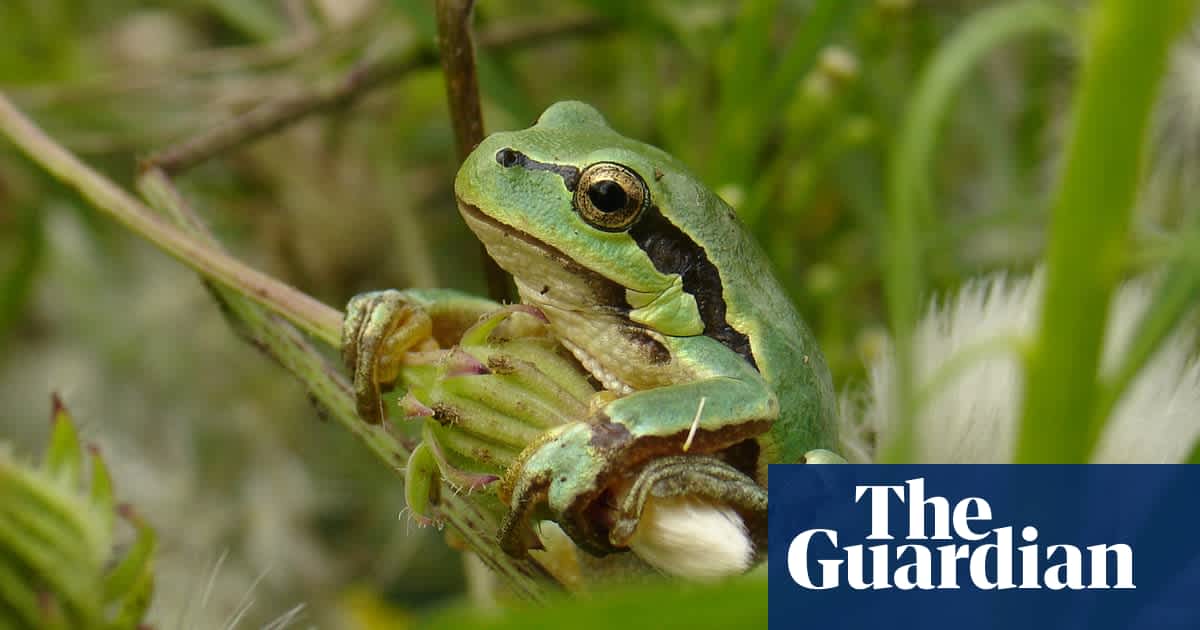Scientists say frog’s journey shows difficulty of spotting insects or fungi spread by global plant trade
A tiny tree frog hitchhiking in a bunch of roses to Sheffield from Colombia has inspired a study into invasive species reaching the UK’s shores.
He initially thought it was some kind of prank, as the frog was exotic: not a European species. Eventually, to his amazement, he realised it must have perched among the flowers all the way from Colombia via Ecuador.
“Finding a South American tree frog in a Sheffield florist was extraordinary. It made me realise that if you can get this type of fragile, small vertebrate arriving alive in a flower shipment without being noticed at customs, just how hard it must be to detect very small agricultural insect pests or their eggs,” said Petrovan.
The UK is very vulnerable to pests and diseases arriving through the horticulture trade, particularly as climate breakdown brings warmer and more humid temperatures enjoyed by insects and diseases.
Scientists believe it is only a matter of time before the devastating pest Xylella fastidiosa, which has decimated olive groves across Europe, arrives in a pot of lavender or rosemary. Invasive pests and diseases such as ash dieback and the Asian hornet have already arrived in the UK, causing huge problems for native wildlife.
Petrovan and his team decided to work out how many types and numbers of pests were arriving on imported ornamental plants, as there is no comprehensive international database. The team analysed records of pests found in ornamental plants at customs in the Netherlands in 2017-2018, and reported to Defra in the UK in 2021-2023. In both cases, more than 80% of the pests intercepted were insects.
However, they also found continental European snakes, geckos and Italian wall lizards were making their way to northern Europe undetected among imports of ornamental olive trees. European tree frogs were also often found on cut flowers in the Netherlands. Spiders, fungi, insects and other reptiles were also hitching rides around the world.
Sign up to Headlines UK
Get the day’s headlines and highlights emailed direct to you every morning
Despite regulations and border checks, it seems, imported cut flowers and pot plants are becoming an increasing risk for invasive species because of the huge and growing amount of trade.
“Adult snakes and lizards are just the tip of the iceberg. If they’re getting through, what’s the chance of us spotting small insects and fungi – the things that really cause the problems? It’s inconceivable that officials can thoroughly check an import of a million roses from Kenya, for example.”
Petrovan added: “The sheer volume of cut flowers and ornamental plants being traded at speed around the world makes it extremely difficult to intercept all the pests and diseases they carry. Even with the best of intentions, unwanted hitchhikers are getting through customs import checks all the time.”
The researchers are calling for better regulation around the ornamental plant trade. They said any policies should be carefully designed as the trade is important for economies worldwide and creates jobs in rural areas.
Petrovan said: “We absolutely don’t want to encourage kneejerk reactions that might be well-meaning, but actually cause more problems than they solve.
“We need to push to make the industry more sustainable through things like certifications and better regulation, and to work with those involved in the trade to better understand the risks and how to mitigate them.”
A Defra spokesperson said: “This Government will never waver in its duty to support the UK’s biosecurity, protect our farmers and food supply. The Border Target Operating Model continues to protect our crops, livestock, and food supply chain from pests and disease, while minimising any disruption to trade.”
Source: www.theguardian.com
